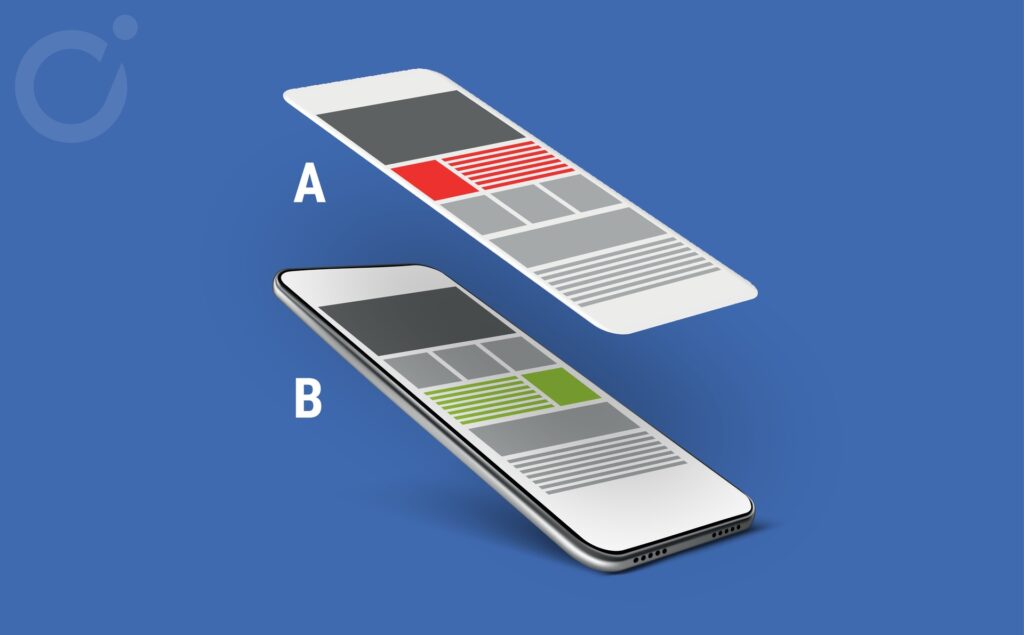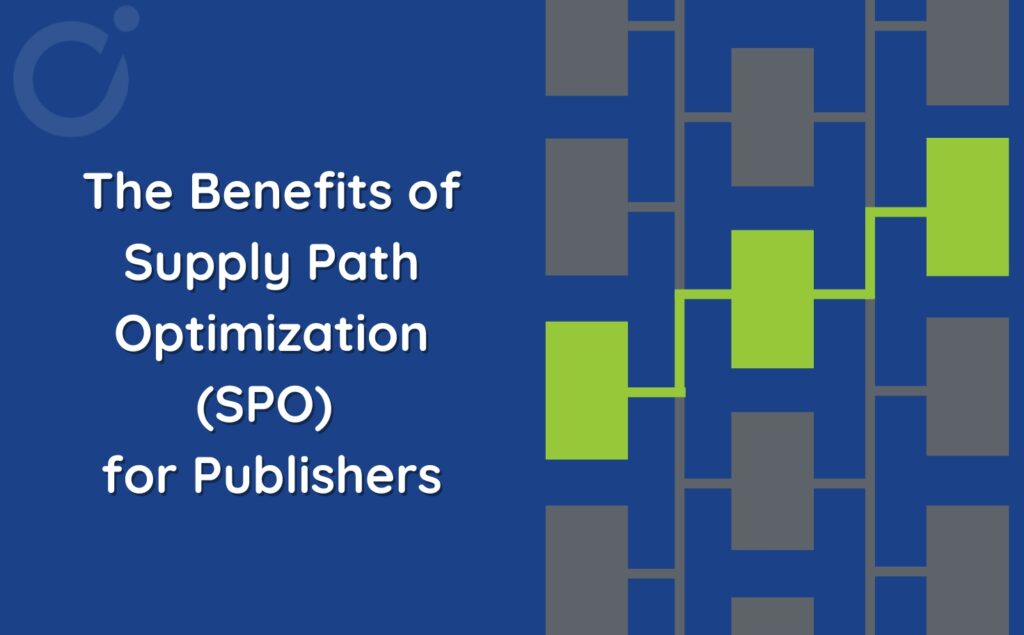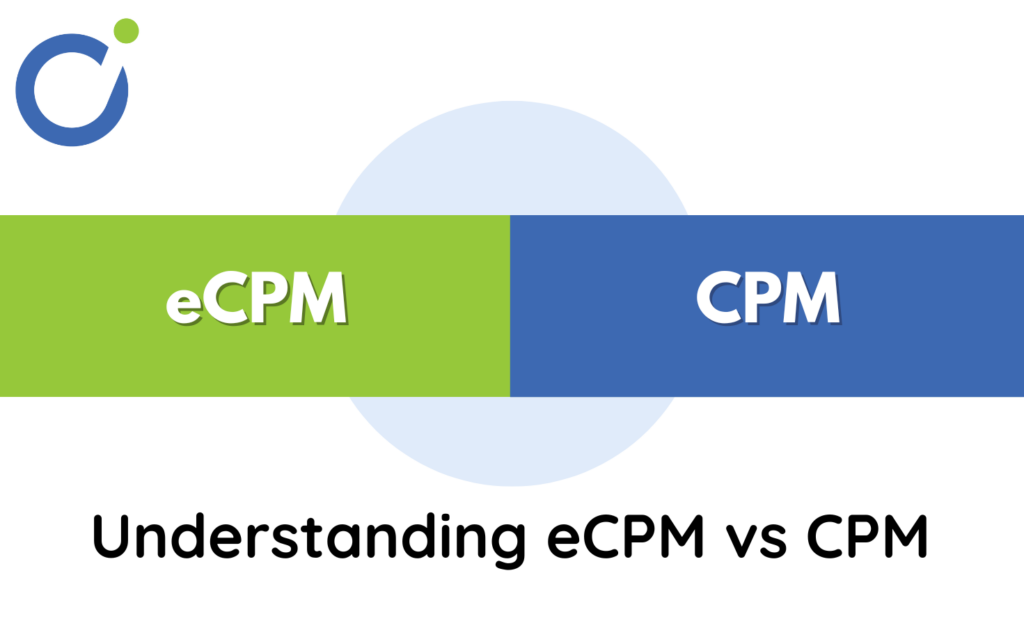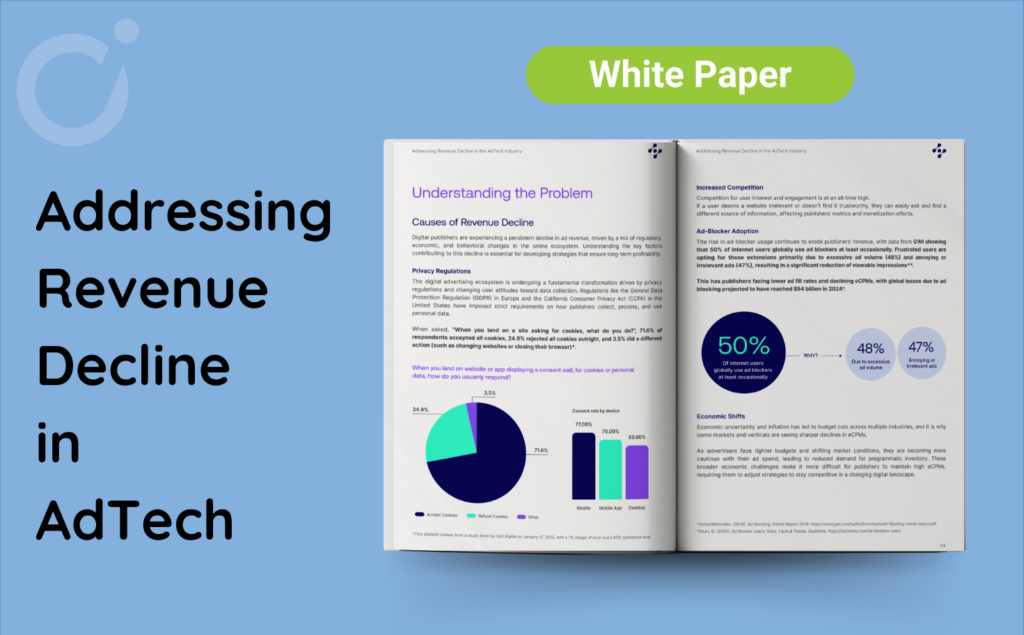Implementing new advertising parameters, keeping the ones that work and discarding those that, if anything, hinder profitability…It’s painstaking work, if you don’t have the right resources available to you. In this increasingly complex industry, publishers are under pressure to embrace greater technology in order to stay competitive, but how do you know if these technologies are profitable? To answer this question, we configure A/B tests, and this enables us to make agile decisions about monetisation. Let’s focus on 6 effective tests for your Page RPM; but firstly, here’s a little more explanation of this A/B testing principle.
How do we implement the A/B tests?
Although this may seem complicated to you, the principle of A/B tests as they are applied to monetisation is the same as for the A/B tests that are more common for optimising conversion tunnels, particularly for e-merchants. We run 2 different parallel configurations over the same period with two distinct groups of internet users – the control group and the test group. We allow this configuration to run for a certain time period, then we analyse the results displayed on our Editors Dashboard, including the page RPM. This indicator is the result of a better filling rate, a better advertising density (number of impressions per page) and a better eCPM per impression.
Read: What data should be analysed to maximise your advertising gains?
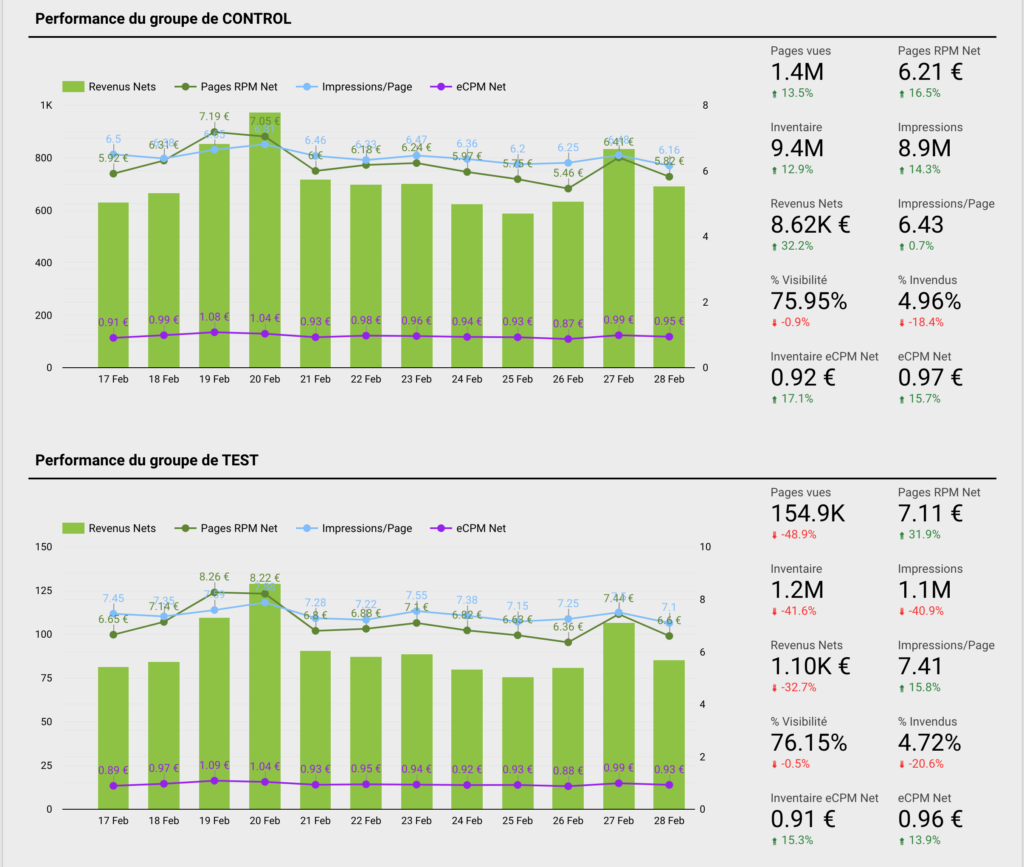
Here we can see an increase in the overall Page RPM of over 14%, after running a test on the layout of a media outlet on Finance, in February 2022. In fact, we automatically implemented our ad insertion module on 11% of its traffic via our test group. Go to test paragraph #3 – With versus without automatic insertion into the heart of the content, to learn more about the benefits of this test!
6 examples of A/B tests to boost your revenue
Test #1. With versus without in-view ad refresh
A well implemented, in-view ad refresh (or Ad Refresh) is beneficial to your income. At Opti Digital, we activate Refresh based on viewability. This means that we only implement it if the advertising location is displayed on the user’s active screen after the time has elapsed.
We recommend A/B test in order to find out the places where it is best to use smart refresh. For example, on a small ad site, we implemented in-view Ad Refresh only on the wide-angle keypad and the sticky location in the footer on desktop and mobile. This test not only improved the publisher’s viewability, but also increased its Page RPM by 8%. Now we systematically use this module, as it is so beneficial to monetisation for publishers that we work with.
Test #2. Measuring the incremental value of a demand partner
It is not always easy to know which SSP will have real added value in terms of monetising your media. Rather than using everyone you can find in the marketplace, sometimes it’s better to focus on the best performing ones. In order to identify them, we advise you to A/B test them to measure their added value before rolling them out to all your inventories, by asking yourself the following question: does this bidder contribute a lot to the bids and increase my Page RPM?
Last year, we chose to deploy Triplelift in an online magazine with editorial content after seeing using an A/B test that by including this partner, an increase in page RPM of over 19% was achieved.
Test #3. With versus without automatic insertion into the heart of content
At Opti Digital, one of the modules we offer is to move ads to where they are likely to have better performance, in particular to the heart of content (articles, forums, etc.).
To assess the effectiveness of this functionality, we have run the test several times by placing it on 25% of the traffic in our media network, replacing static locations. Spectacular results were generated and their Page RPM increased by over 10%.
By using every advertising space available, this automatically enables us to discover new locations and increase the number of ads per page. We now systematically deploy this optimisation on our publishers’ long-form pages, unless they would prefer not to do so.
Test #4. Adjusting the distance in pixels between two ads at the heart of content
Another point concerning automatic insertion in the heart of content is that we recommend adjusting the spacing between two ads to increase the ad density per page and to deliver a good user experience. The A/B test is an excellent way to identify the ideal spacing between two in-read ads.
We ran the experiment in a specialist science media last year and saw a marked improvement in its revenue. We set a distance of 800 px between 2 ads instead of 1200 px. The page RPM immediately increased by 6%.
Test #5. Deleting or adding a size within a location
Another A/B test recommendation is not to hesitate to delete sizes that fail to generate good results or that spoil your user experience and, conversely, to add new ones to see if they can add value.
This is what we tested, on a Finance sector media last year; we added the 300×600 px, 120×600 px and 160×600 px sizes to the site’s sidebar inventories, which had an initial height of 250 px. This made it possible to open up access to more advertisers. Thanks to this test, this publisher’s Page RPM increased by 7%.
Test #6. Adjustment of floor prices based on specific criteria
At Opti Digital, we adjust our customers’ floor prices based on seasonality; this is a criterion that may vary from one media to another. It may be sensible to carry out a test during a period of high demand in order to pinpoint the best floor price to stimulate competition in Header Bidding between the SSPs and Google’s demand.
Another A/B test idea relating to floor prices: adapt them according to the size of an ad block. According to our feedback, defining a higher floor price on large-scale ads has a positive impact on UX, as well as boosting the page RPM. This then makes it possible to deliver better quality ads to web users, thereby improving their website browsing experience. For example, we increased the floor price by 0.10 centimes on the billboard of a small ad website, which generated a 2% increase in its Page RPM.
Teasing: At Opti Digital, in order to improve floor price optimisation, we are finalising the development of an innovation in automation. Our Data Scientists are crafting it using machine learning… We are keen to tell you more about it.
Last year, we developed a tool that enables us to remotely implement our advertising optimisations in a more agile way. Our proprietary technology now includes the ability to run A/B tests. The testing possibilities are endless, so don’t hesitate to submit your ideas for your media: let’s interact!

